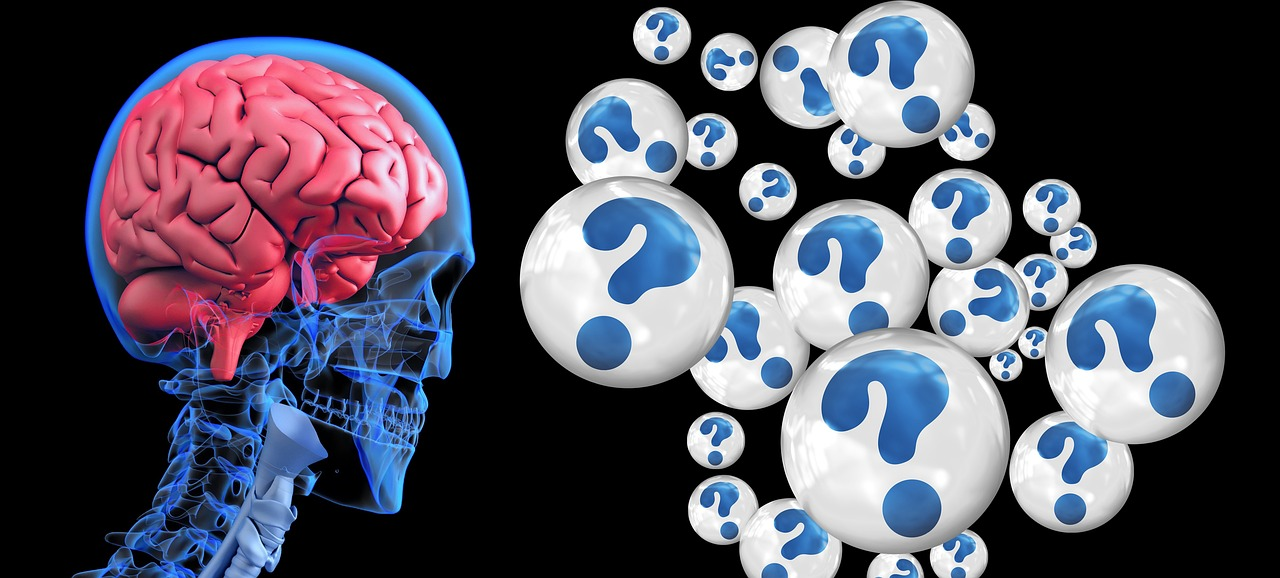6 Shocking Reasons to Limit Alcohol Intake for Better Health in 2024
Are there reasons you should limit alcohol intake? The answer is a resounding YES!!!
Alcohol consumption can threaten your health and safety, regardless of the amount consumed. Recent studies suggest that limiting alcohol intake is essential to avoiding these risks. This lifestyle changes blog post will delve into the immediate and long-term physical and mental health risks of consuming alcohol and define moderate and heavy drinking to help you limit alcohol intake.
Benefits of Limiting Alcohol Intake in Palm Springs
Alcohol consumption is a common aspect of social life, but even moderate intake can pose significant health and safety risks. In Palm Springs, where social activities often revolve around poolside gatherings and vibrant nightlife, understanding these risks is crucial. This blog post will discuss the immediate and long-term effects of alcohol consumption and provide guidelines for moderate and heavy drinking to help residents of Palm Springs limit their alcohol intake.
Summary Points
1. Risks Associated with Alcohol Consumption
Alcohol can jeopardize both health and safety, irrespective of the quantity consumed. Risks include impaired cognitive and motor functions, increased likelihood of accidents, and long-term health issues such as liver disease, depression, and various types of cancer.
2. What Constitutes Moderate and Heavy Drinking
– Moderate Drinking: Defined as up to one drink per day for women and two drinks per day for men.
– Heavy Drinking: Consuming more than eight drinks per week for women and fifteen drinks per week for men.
3. Health Benefits of Reducing Alcohol Intake
By limiting alcohol consumption, you can significantly reduce the risk of chronic diseases and other serious health problems. Additionally, reducing alcohol intake can decrease the risk of involvement in traffic accidents and related fatalities.
Implementing Changes in Palm Springs
The social scene in Palm Springs, coupled with the city’s focus on relaxation and entertainment, can make moderation challenging. However, residents can take practical steps to reduce their alcohol consumption:
– Setting Personal Limits: Decide in advance how many drinks you will have and stick to that limit.
– Choosing Alcohol-Free Days: Designate several days each week as alcohol-free to help reduce overall intake.
– Seeking Support: Utilize local resources such as support groups or counseling services for assistance with reducing alcohol consumption.
– Opting for Healthier Alternatives: Replace alcoholic beverages with non-alcoholic drinks or water, especially during hot weather, to stay hydrated and healthy.
Next Steps:
Limiting alcohol intake is a wise decision for maintaining health and safety in Palm Springs. Understanding the definitions of moderate and heavy drinking can help individuals make informed choices about their alcohol consumption. By adopting strategies to moderate intake, residents can enjoy a healthier lifestyle while still partaking in the social activities that make Palm Springs a unique and vibrant community.
This blog post provides valuable insights into the risks associated with alcohol consumption and practical advice for those looking to limit their intake, tailored to the lifestyle and environment of Palm Springs.
- Any amount of alcohol consumption can put your health and safety at risk
- Moderate drinking means having one drink per day for women and two drinks per day for men, and heavy drinking is defined as consuming more than eight drinks per week for women and 15 drinks per week for men
- If you limit alcohol intake, you can reduce the risk of developing health problems such as liver disease, depression, and cancer. You can also reduce your risk of causing traffic accidents and fatalities.
Why Everyone Should Limit Alcohol Intake
Alcohol’s impact on your body begins as soon as you take your first sip, but you may not immediately feel its effects.
Sure, you may feel the pleasurable warm buzz after sipping one alcoholic beverage or experience the dreaded hangover the following day after a night of binge drinking. But you probably don’t worry much about them because they are transitory physical and mental symptoms. They go away quickly, and you feel like your old self again.
However, any amount of alcohol consumption can potentially lead to unwanted health consequences, even if you don’t drink often. While people who binge or drink heavily may experience more immediate health effects, moderate drinking can also pose risks. Therefore, it’s essential to be mindful of the potential impact alcohol can have on your health and to limit alcohol intake.

Ultimate Risk of Alcohol Use: Death
Alcohol abuse is a serious issue that can have fatal consequences, as confirmed by recent research.
A study published in late 2022 revealed that excessive alcohol consumption led to approximately 140,000 deaths annually in the United States between 2015 and 2019 (1). While about 40% of these deaths were due to immediate causes like vehicular accidents, alcohol poisoning, and homicides, most were caused by chronic conditions associated with excessive alcohol use, including heart disease, liver disease, and cancer.
But what if you don’t drink alcohol excessively? What if moderate alcohol consumption is your thing?
When experts discuss the serious health consequences associated with excessive alcohol consumption, many people assume that it only applies to those who suffer from an alcohol use disorder. However, even moderate drinking can pose health risks. Alcohol can harm one’s health, even at very low levels, and even if you limit alcohol intake.
Risks of Drinking Alcohol
Chronic alcohol use is associated with numerous short- and long-term mental and physical health problems, and it can also shorten your life expectancy in other ways. Here are 6 of the most common and severe risks that can occur if you fail to limit alcohol intake.

1. Traffic Crashes and Fatalities
Despite strict drunk driving laws, many people risk getting behind the wheel of a car after drinking a few drinks.
According to the 2020 National Survey of Drug Use and Health (NSDUH), an estimated 18.5 million U.S. residents aged 16 years and older drove under the influence of alcohol in the past year (2).
Meanwhile, data from the Behavioral Risk Factor Surveillance System revealed that in 2020, 1.2% of adults drove after consuming excessive amounts of alcohol in the past 30 days, resulting in an estimated 127 million instances of alcohol-impaired driving among U.S. adults (3).
Drunk driving doesn’t come without significant health and safety risks.
The National Highway Traffic Safety Administration (NHTSA) reports, “In 2021, there were 13,384 fatalities in motor vehicle traffic crashes in which at least one driver was alcohol-impaired. This represented 31 percent of all traffic fatalities in the United States for the year.” (4)

2. Liver Disease
Liver disease is a prevalent issue due to alcoholism and alcohol abuse. This is because the liver primarily breaks down and metabolizes alcohol.
Prolonged alcohol consumption can lead to inflammation and swelling of the liver, causing significant damage over time. Eventually, this damage can result in scarring, commonly known as cirrhosis. Cirrhosis marks the final stage of liver disease.
The three stages of alcohol-related liver disease are as follows:
- Alcoholic fatty liver disease is characterized by the gradual accumulation of fat around the liver. This condition can be reversed by giving up alcohol consumption. As many as 20% of heavy drinkers develop this condition (5).
- Acute alcoholic hepatitis is where the liver becomes inflamed (swollen). In this second stage, the severity of liver damage determines the outcome. Treatment can fix the damage, but liver failure is possible in severe cases. As many as 35% of alcoholics develop this second stage (6).
- Alcoholic cirrhosis is when liver scarring occurs from many years of chronic alcohol abuse and alcoholism. (The scarring comes from the liver trying to repair itself from alcohol damage.) As there is no way to reverse this scarring, liver failure is the likely outcome. It must be noted that alcohol is not the only cause of cirrhosis. Many types of liver disease can cause this scarring. An estimated 10% to 25% of alcoholics develop alcoholic cirrhosis (5).

3. Impaired Brain Function
Alcohol significantly impairs the structures of the brain. It hinders the chemical signals between neurons, leading to the familiar immediate symptoms of intoxication, like slurred speech, loss of coordination, poor memory, impulsive behavior, and impaired reflexes (7, 8)
Long-term heavy drinking causes the brain to adapt to the blocked signals by reacting more strongly to certain neurotransmitters. Even after the alcohol leaves the system, the brain still overreacts to these neurotransmitters, resulting in severe and potentially dangerous withdrawal symptoms that can harm brain cells (7, 8, 9). Drinking heavily and then suddenly stopping makes this harm worse (10).
Alcohol has several detrimental effects on the brain. One way is through neurotoxicity, which happens when neurons become overactive due to neurotransmitters, leading to eventual “burnout.” As neurons form the pathways between different parts of the brain, their burning out can cause a noticeable decrease in the speed of these pathways’ reactions.
Heavy alcohol use can damage not only the pathways in the brain but also the brain matter itself. People who are dependent on alcohol often experience a condition called “brain shrinkage.” (11) This condition leads to a reduction in both gray and white matter over time.
Alcohol dependence is a significant risk factor for developing Alzheimer’s disease, particularly in women (12). Alcohol-related brain damage is estimated to contribute to 10% of cases of early-onset dementia (13).
Although some brain damage may be reversible following a prolonged period of sobriety, chronic and excessive drinking can permanently impair brain function (14).

4. Depression
Severe depression, or major depression, is a prevalent mental disorder in the United States. According to research, approximately 21 million adults in the U.S. experienced at least one major depressive episode in 2021 (15). For some people, major depression can cause significant impairments that disrupt or restrict their ability to perform critical daily tasks. Major depression is also the leading risk factor for suicide.
Alcohol consumption and depression have a close yet complex relationship. While both conditions can increase the risk of the other, alcohol abuse may be the more influential factor (16, 17).
Some individuals with anxiety and depression turn to alcohol to reduce stress and improve their mood. While this may provide temporary relief, it can worsen their mental health and trigger a harmful cycle (18).
In fact, for some people, heavy drinking is a significant contributor to depression. Therefore, treating the underlying alcohol abuse can significantly improve mental health (19).

5. Heart Disease
Heart disease, a condition that affects the heart, is the leading killer of U.S. adults.
Studies have suggested that moderate alcohol consumption may be associated with a lower risk of dying from heart disease. However, recent studies indicate that consuming alcohol, regardless of the quantity, may negatively affect one’s health.
It is a medically established fact that excessive alcohol consumption is associated with several adverse health outcomes, including heart conditions. Drinking too much can lead to high blood pressure, heart failure, stroke, and cardiomyopathy, a disease affecting the heart muscle.
This is particularly true with excessive drinking behaviors, such as binge drinking and heavy drinking. Thus, drinking too much alcohol can increase heart disease and stroke risk. But, thankfully, if you limit alcohol intake, you may be able to reduce these risks.

6. Breast Cancer
Breast cancer is a type of cancer that develops in the cells of the breasts. It is the second most common cancer diagnosed in women in the United States, after skin cancer. Roughly one out of every eight women, or 13% of the female population, will be diagnosed with breast cancer at some point in their lifetime (20). Although breast cancer can also occur in men, it is much more prevalent in women.
The World Health Organization states that alcohol consumption is among the most significant breast cancer risk factors (21).
Alcohol consumption is a significant risk factor for several types of cancer, including the following:
- Esophageal cancer
- Mouth cancer
- Throat cancer
- Liver cancer
- Larynx (voice box) cancer
- Colorectum cancer
The WHO further states that “There is no safe level of alcohol consumption. The risk of breast cancer increases with each unit of alcohol consumed per day.” (21)
If you want to reduce your risk of breast cancer, you should limit alcohol intake, replacing it with other beverages.
Short-Term Effects of Alcohol Consumption
The short-term effects of drinking alcohol can include:
- Dizziness
- Slurred speech
- Mood changes
- Giddiness
- Nausea or vomiting
- Drowsiness
- Loss of coordination
- Inhibition
- Diarrhea
- Headache
- Gaps in memory (blackout)
- Problems focusing
Summary
Drinking alcohol in moderation is generally considered safe for most people, but newer research has indicated that drinking any amount of alcohol can harm health. Excessive and long-term use of alcohol can lead to severe mental and physical health issues.
Several factors affect the metabolism of alcohol, and its effects may vary from person to person, making it difficult to determine the recommended intake.
According to the American Dietary Guidelines, women should limit alcohol intake to one drink per day, while men should not consume more than two drinks per day. However, certain individuals, such as pregnant women and those with specific medical conditions, should avoid alcohol altogether.
Frequently Asked Questions
How much alcohol is ok per day?
To minimize the risks associated with the consumption of alcohol, the 2020-2025 Dietary Guidelines for Americans suggest that individuals of legal drinking age may opt to refrain from drinking or limit their intake to a maximum of 2 drinks per day for men and one drink per day for women on the days when alcohol is consumed. It is crucial to follow these guidelines to maintain a healthy lifestyle.
It is important to note that if you are pregnant or planning to become pregnant, it is highly recommended that you avoid consuming alcohol. Additionally, individuals who have specific medical conditions such as liver disease or diabetes, those who are taking antidepressants or other medications, current and recovering alcoholics, and individuals who are not of legal drinking age should also refrain from drinking alcohol.
How much alcohol is too much per week?
For women, heavy drinking is defined as consuming eight or more drinks per week. For men, heavy drinking is defined as consuming 15 or more drinks per week. Any alcohol use during pregnancy is considered harmful.
What is the 20-minute rule for alcohol?
The 20-minute rule for alcohol consumption suggests waiting 20 minutes after finishing one drink before starting another. This rule will help prevent you from drinking too many alcoholic beverages.
What is substance use disorder?
Substance use disorder is a pattern of substance (drug) use that leads to significant problems or distress. These problems may include missing work or school or using substances in dangerous situations like driving a car. Alcohol is the most commonly used legal drug associated with substance use disorder.
1- https://jamanetwork.com/journals/jamanetworkopen/fullarticle/2798004
2- https://crashstats.nhtsa.dot.gov/Api/Public/ViewPublication/813450
3- https://www.cdc.gov/brfss/index.html
4- https://crashstats.nhtsa.dot.gov/Api/Public/ViewPublication/813450
5- https://www.upmc.com/services/liver-cancer/liver/alcohol-liver
6- https://liverfoundation.org/resource-center/videos/alcohol-related-liver-disease/
7- https://pubmed.ncbi.nlm.nih.gov/20617045/
8- https://pubmed.ncbi.nlm.nih.gov/15303622/
9- https://pubmed.ncbi.nlm.nih.gov/20729980/
10- https://pubmed.ncbi.nlm.nih.gov/23347747/
11- https://pubmed.ncbi.nlm.nih.gov/22868938/
12- https://www.ncbi.nlm.nih.gov/books/NBK83244/
13- https://www.ncbi.nlm.nih.gov/pmc/articles/PMC3580328/
14- https://pubmed.ncbi.nlm.nih.gov/16156047/
15- https://www.nimh.nih.gov/health/statistics/major-depression
16- https://pubmed.ncbi.nlm.nih.gov/21382111/
17- https://pubmed.ncbi.nlm.nih.gov/19255375/
18- https://pubmed.ncbi.nlm.nih.gov/19586139/
19- https://pubmed.ncbi.nlm.nih.gov/19919594/
Dr. Matthew Olesiak, MD, is the Chief Medical Director at SANESolution, a renowned wellness technology company dedicated to providing evidence-based solutions for optimal living. Dr. Olesiak earned his medical degree from the prestigious Jagiellonian University Medical College in Kraków, Poland, where he developed a strong foundation in medicine.





